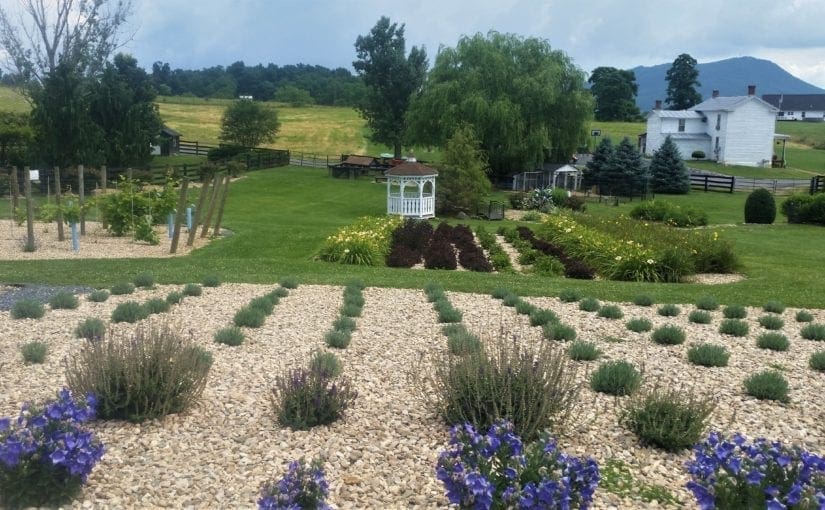Most recently updated January 18th, 2022
Estimated Reading Time: 13 minutes
Almost exactly a year ago, I spent a great week in the Shenandoah Valley, Virginia.
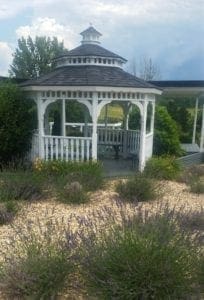
Most of my time was spent hiking at beautiful Shenandoah National Park – you can read about my five days of hikes here – but I also took a break from hiking to see some other things in the area.
White Oak Lavender Farm & The Purple WOLF Vineyard is a family owned farm located in Shenandoah Valley, near Harrisonburg.
I’m an enthusiastic gardener and also enjoy a good glass of wine, so a visit to White Oak Lavender Farm was a perfect break from all of the sweaty hiking 🙂
They offer wine tastings, farm tours, lectures, classes, a petting area and a lovely lavender gift shop all in a historic setting.
They were also only a quick 20 minute scenic drive from my lodgings near the Park.
Some of my posts contain affiliate links. If you make a purchase through an affiliate link, I will receive a small payment at no additional cost to you. As an Amazon Associate, and other marketing affiliations, I earn from qualifying purchases. See full Disclosure page here.
White Oak Lavender Farm is owned and operated by the Haushalter family in Harrisonburg, Virginia in the beautiful Shenandoah Valley near Shenandoah National Park.
When you first drive up to the farm, you’ll park in a lot in front of two very purple buildings.
On the left is the indoor and outdoor wine tasting bar, and on the right is the Lavender Shop, which has a spacious porch.
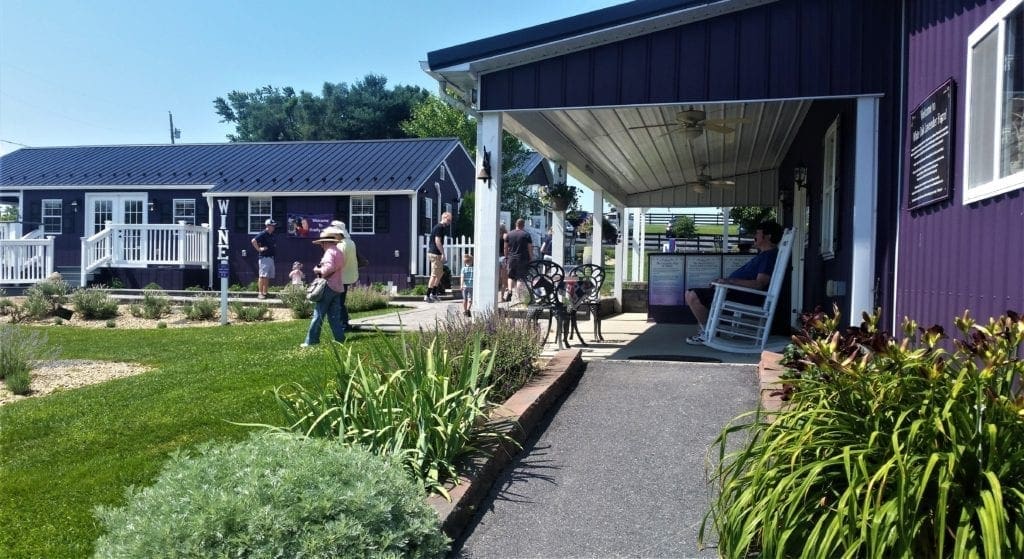
You can sit on the rocking chairs while enjoying some lavender ice cream and there’s even a small table and chair set for little ones to play tic-tac-toe.
In between the two buildings, there’s a gazebo with seating and a front garden with some lavender plantings.
To get tickets for Tours, you’ll need to go into the Lavender Shop. For Wine Tastings, you can go directly to the Wine Bar.
I did a guided tour first – which included a walk around the whole farm, an explanation of the lavender extraction process, and an opportunity to cut some lavender stems to take home.

WARNING: I go into History Geek mode a bit in this article, so if you only want to read about the Lavender Farm’s current activities and products, use the Table of Contents to skip over the very interesting historical stuff 🙂
About White Oak Lavender Farm
White Oak Lavender Farm has been open to the public since 2008 and has grown into a popular year-round agri-tourism venue.
The farm is home to over 8,000 lavender plants and about 3,000 grape vines in many varieties.

The lavender plants are harvested in the Summer to dry the flowers for buds and to extract the essential oil and hydrosol (or floral water) through steam distillation.
They explain the extraction process and show the machinery that’s used for it, and the drying shed, during the Farm Tour.
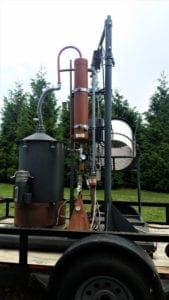
The grapes are harvested in the Fall to make 10 delicious wines – which can be sampled at the Wine Bar on the farm or bought by the bottle to enjoy later.
In addition to in-person farm tours and wine tastings at the farm, they also offer lavender products and wine to customers online.
(See their products online here.)
After my Farm Tour, I spent an enjoyable hour tasting Purple WOLF Vineyard wines at the Wine Bar 🙂
The Purple WOLF Vineyard
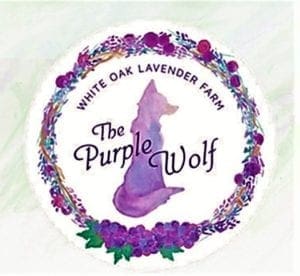
The vineyard was named using the acronym for White Oak Lavender Farm (WOLF) and of course the wolf had to be purple 🙂
WOLF Vineyard winemaker Randy Phillips is also the owner of Cave Ridge Vineyards in Mt. Jackson, VA.
Randy has over 25 years of experience in wine-making and is well known in the Virginia region.
He uses grapes from the Lavender Farm estate, his estate or sourced in the Shenandoah Valley to make WOLF Vinyard wines.
They’re continuously developing new combinations of grapes and lavender for new exciting flavors – – so there’s always a reason to come visit again!

The Wines
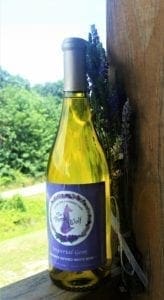
The current wine list includes 6 white wines:
Traminette; Viognier, Riesling; Imperial Gem; Dragonfly; and Thumbelina
They also offer 6 reds:
Butterfly Kisses (Rose); Petit Verdot; Chambourcin; Pardon My Purple, Cabernet Franc and Royale Velvet (Port Style).
Wines infused with lavender are indicated by the lavender plants beside items on the menu.
TASTINGS
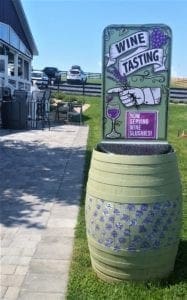
Currently, tastings offer 12 samples of wine for $12, along with other choices of mini tastings, flights, glasses and seasonal wine treats like slushies or sangria.
I had a 12-sample tasting at the long tasting counter on the outside deck behind the indoor wine tasting barn. Results:
-
- My favorites were the Imperial Gem and the Dragonfly, both white wines infused with lavender.
- A close second were the Butterfly Kisses rose, and Royal Velvet red, also both infused with lavender.
You’ll have to taste them all and decide for yourself! 🙂
They have cheese and crackers available for purchase to enjoy with your wine, and you’re also welcome to bring in some of your own snacks.
What is Lavender?
Lavender is a perennial evergreen plant that grows abundantly and spreads so quickly, some people to think of it as a weed!
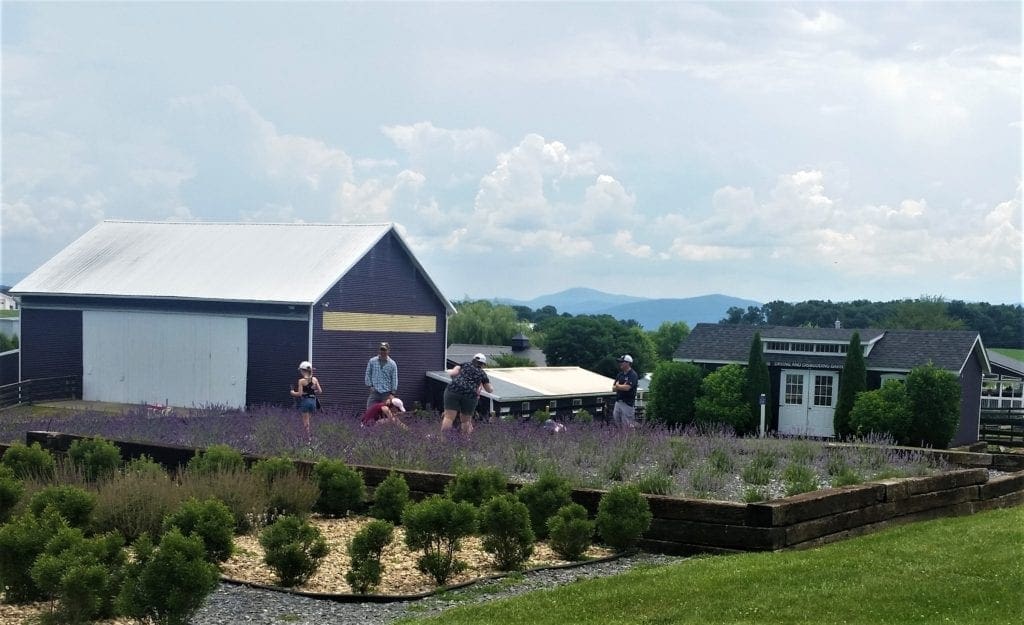
Originally native to North Africa and the Mediterranean region, lavender now also grows throughout the United Kingdom and in parts of the United States.
There are more than 40 known types of lavender.
History of Lavender
Lavender has been used by many civilizations over the past 2500 years. In fact, the plant gets its name from the Latin word “lavare” (“to wash”).
Through the the ages, it’s been used for making soaps, cosmetics, and natural cleaning products. And for centuries Herbalists have used lavender as a medicinal plant.
A common type used for medicinal purposes is Lavendula angustifolia.
Uses in the Ancient World
References to lavender have been found in many ancient writings around the world.

-
- In ancient Egypt, lavender was popular for mummification.
- Phoenicians used lavender in cooking and bathing.
- Arabian women valued lavender oil in their hair.
- In ancient Greece, lavender oil is reported as a cure for insomnia and back pain.
- The Bible refers to “the oil of nard,” which is a variety of lavender that grew in the Mideast.
During the Middle Ages, lavender was made popular throughout Europe .
Later, the Colonists brought lavender with them when they settled in the Americas.
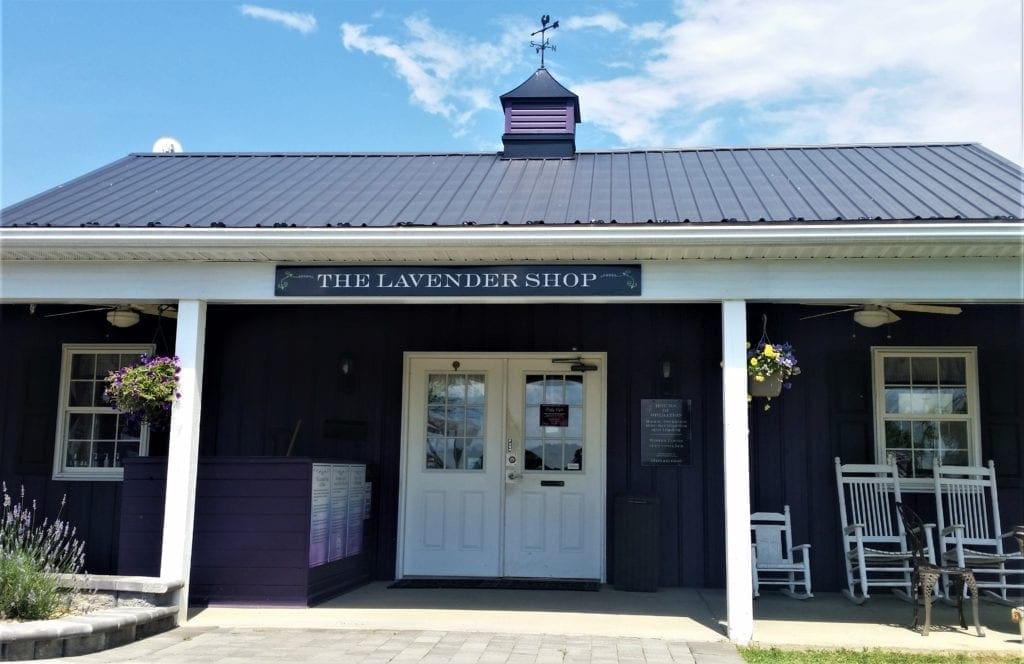
Modern Lavender Uses
Historically, lavender has been revered for its fragrance and for it’s healing properties in salves, tinctures and teas. These uses are still popular today.
In modern times, we also cook with lavender and associate the scent of lavender with deep relaxation and stress relief.
The plant’s flowers, leaves and essential oil can all be used as natural medicines.
The Lavender Shop offers their lavender in several forms:
-
- For relaxation, they have dream pillows, stress balls, massage oils and bath and body luxuries.
- For culinary purposes there are spices, teas, vinaigrette, jams, jellies and ice cream.
- They also sell culinary lavender by the tin and offer recipe cards so you can create your own tasty lavender-spiced dishes.
Stress Relief and Healing
Lavender is known to be soothing and helpful for reducing stress, anxiety, depression, and insomnia. It even helps fight inflammation and wrinkles!
How does Lavender work?
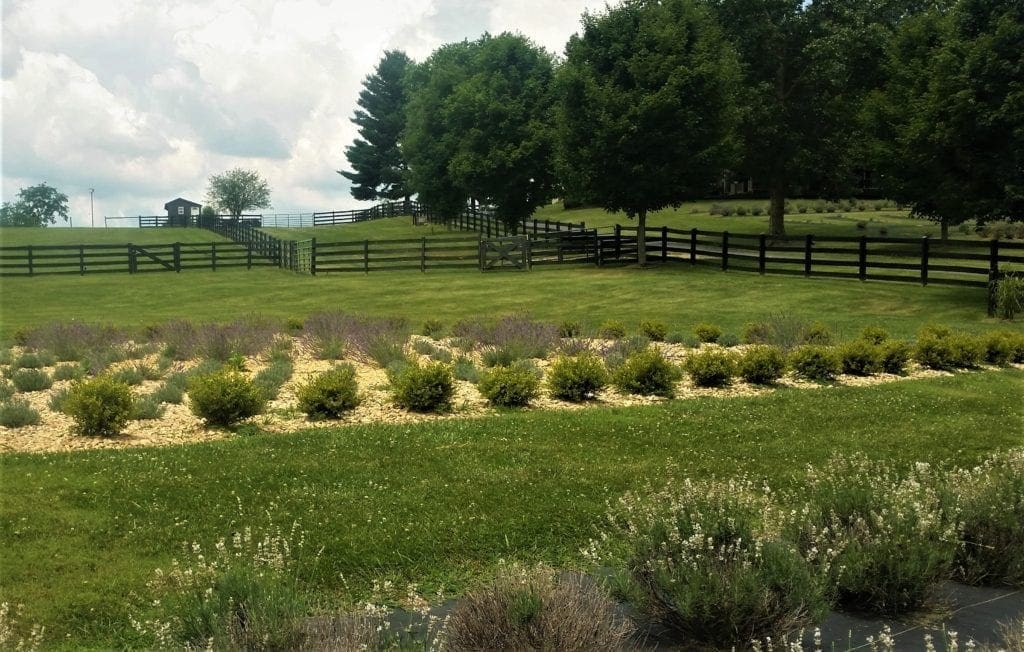
This gently scented flowering herb has been shown to have a pretty broad range of effects in the body:
-
-
- Lavender works as an anxiolytic (an anxiety reliever) and as a sedative, to increase relaxation and calm, and help bring about sleep
- Lavender interacts with the neurotransmitter GABA to help quiet the brain and nervous system activity, reducing agitation, anger, aggression, and restlessness
- Lavender functions as a pain reliever, or analgesic
- Lavender has anti-bacterial capabilities
- Lavender can reduce inflammation
-
Findings suggest that lavender oil helps protect against oxidative stress in the brain.
These same effects may help reduce the appearance of wrinkles and fine lines when applied to the skin.
Once blended with a carrier oil, lavender essential oil can be massaged into your skin or added to your bath.
You can also sprinkle a few drops of lavender essential oil onto a cloth or tissue and inhale its aroma, or add the oil to an aromatherapy diffuser or vaporizer.
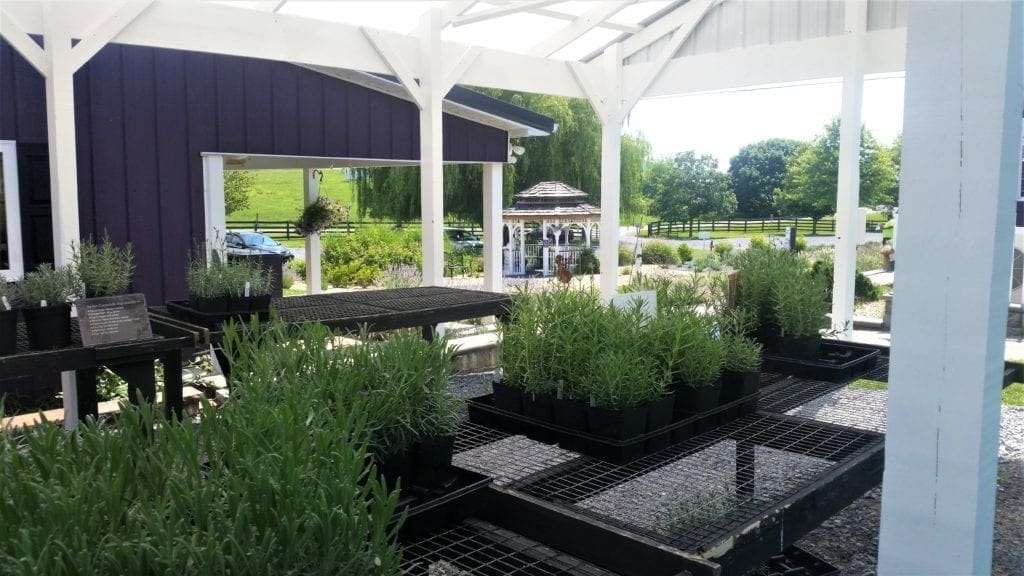
Local History
Cross Keys, near where White Oak Lavender Farm is located, is an unincorporated community in Rockingham County, Virginia, located on State Route 276 south of Harrisonburg.
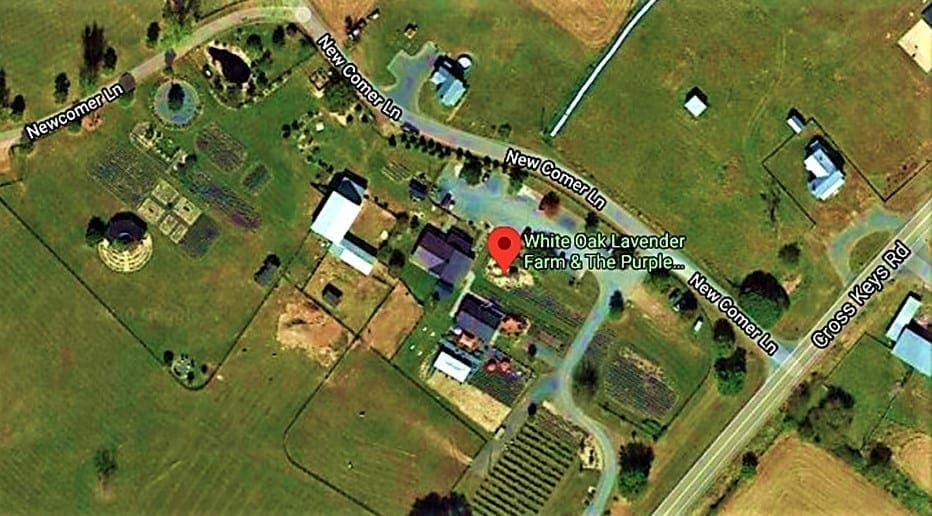
The Cross Keys area is at the southern end of Massanutten Mountain in the Shenandoah Valley.
On June 8, 1862, it was the site of the Battle of Cross Keys, part of “Stonewall” Jackson’s Valley Campaign during the American Civil War.
The farm sits on the valley’s White Oak Ridge, which played a part in the Battle of Cross Keys as the staging area, where some of the horse-drawn ambulances waited to carry away casualties of battle.

In fact, when they were digging a new raised field for the Lavender Farm on the site of an old creek, they found old medicine bottles dating from that time.
Perhaps the medicine bottles held lavender essential oils?
The Battle of Cross Keys
Almost one-third of the American Civil War’s 385 battles were fought on Virginia soil — triple the toll in Tennessee, the next bloodiest state.
The Shenandoah Valley was the scene of many clashes from 1862-1864 as the two great armies fought for control of the strategic corridor connecting the North and South regions of the country.

The Battle of Cross Keys, a relatively small battle, was the penultimate clash in Confederate Army Maj. Gen. Thomas J. “Stonewall” Jackson’s 1862 Shenandoah Valley campaign.
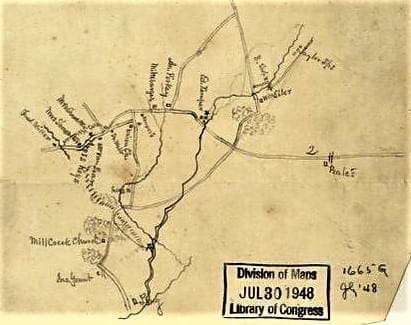
The Order of Battle
Early on Sunday morning, June 8, Union general Fremont marched 11,000 soldiers down Port Republic Road by the Cross Keys tavern and there made contact with the Confederates’ advance guard.
Ewell had three brigades—headed by generals Isaac R. Trimble, George Steuart, and Arnold Elzey—along with four artillery batteries, or about 6,000 Confederate men total.
The Confederates at Cross Keys were outnumbered by Union troops almost two to one, and readied themselves for a hard fight.
How They Beat the Odds
Frémont, however, took a very mild approach, because he mistakenly thought the Confederate force was Jackson’s entire army and not just half of it.
(Jackson himself was in Port Republic with the other troops, not at the Cross Keys battleground.)
-
- Rather than attack, Fremont allowed his long-range artillery to duel with the Confederates. Ewell, meanwhile, took advantage of the delay to fortify his position.
- Eventually, Frémont concluded that his enemy’s right flank was vulnerable and ordered forward a brigade of German emigrants from Louis Blenker’s division.
- They were abruptly halted by the men of Trimble’s brigade, who had been hidden along a fence line, waiting until the Germans were close before unleashing a series of deadly volleys.
- Sensing that the Union troops had been caught off guard, Trimble counterattacked and had Blenker’s men scurrying northwest to Keezletown Road.
- As night fell, he petitioned Ewell to continue the attack, but Ewell refused. (Night attacks were notoriously risky, and Ewell, well aware that he was outnumbered, worried about extending his line too far from Jackson’s support.)
- With Ewell’s permission, Trimble rode to Port Republic and made his case to Jackson personally. But the general was noncommittal. “Consult General Ewell and be guided by him,” he told Trimble.
When Ewell repeated his first refusal, the battle ended.
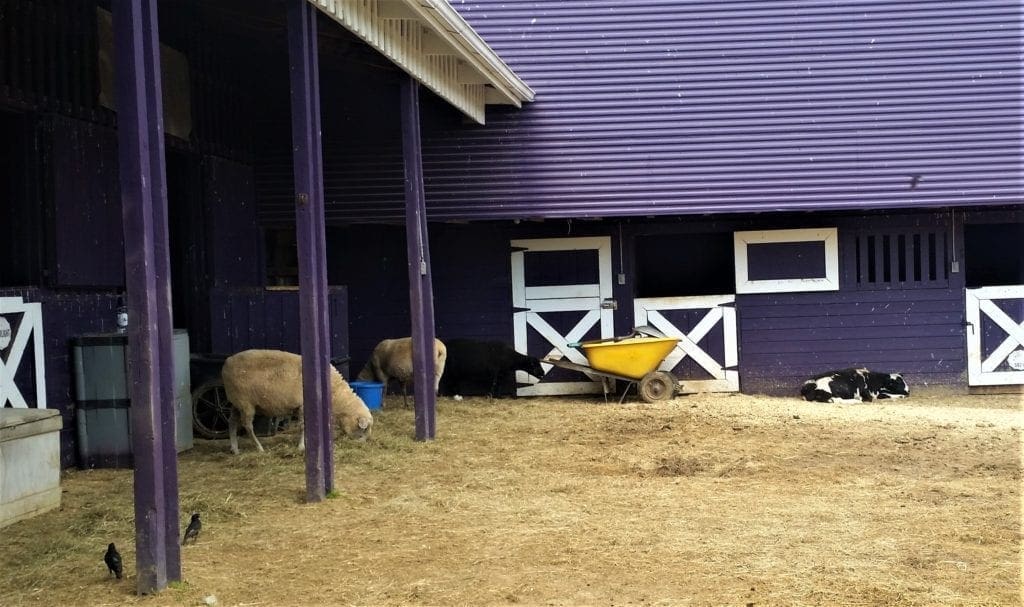
Significance of the Battle
With the retreat of both Union armies, Jackson was freed to join the Confederate army commanded by General Robert E. Lee in the Seven Days’ Battles against McClellan’s army before Richmond.
But the battle at Cross Keys is unique due largely to the wily tactics of the 60-year-old Confederate field commander Trimble, who led his small force to unexpected victory.
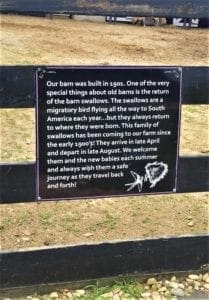
By clever use of the terrain – instead of using the traditional battle method (forming up lines to shoot) – Confederate Brig. Gen. Isaac Trimble shattered a much larger Union force and stalled Fremont’s attack.
Trimble, a Marylander born in Virginia, has been described by historian Douglas Southall Freeman as “perhaps disposed to be contentious and certainly a dandy in dress, but of the most conspicuous courage and a furious, insatiable fighter”.
Aftermath
Losses at the battle were relatively small compared to other Civil War battle casualty numbers.
-
- The Union loss was 114 killed, 443 wounded, 127 missing; in all 684.
- The Confederate loss was 41 killed, 232 wounded, 15 missing; in all 288.

Earlier History of Cross Keys
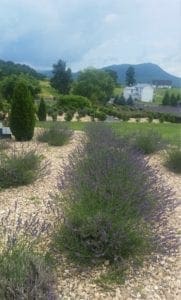
Until 1876-1877, on the crest of a hill about one mile south of Cross Keys, stood the ruins of an Indian Fort built there during the French and Indian War.
HOW DOES A HOUSE BECOME A FORT?

What’s In A Name?
Cross Keys tavern originally got it’s name from an old bookstore in London in 1650-1655, and the area in Rockingham County, Va took it’s name from the tavern.

The house was built of hewn logs, weather-boarded and plastered inside. In the hallway was a latticed room called the “bar” where liquors were served in the olden days.
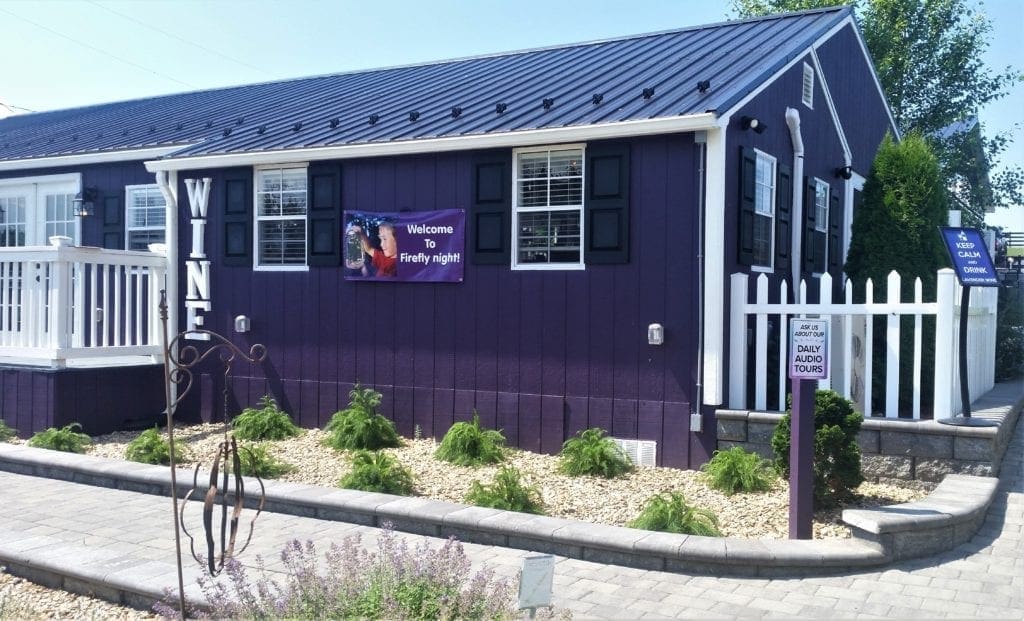
-
-
- William was a private soldier in the Tenth Virginia Regiment and died in the service in 1862, perhaps at the Battle of Cross Keys.
- The home of Edward S. Kemper and the Dovel house were made Union hospitals during the battle of Cross Keys, in which eighty-some soldiers were placed.
- The wounded were captured by Jackson’s cavalry under Captain McNeil after the battle. After about a week, they were transferred to a hospital in Harrisonburg, Va.
-
Things To Do On the Farm
There are plenty of things to do on the farm besides visit the Lavender Shop or have a Wine Tasting.
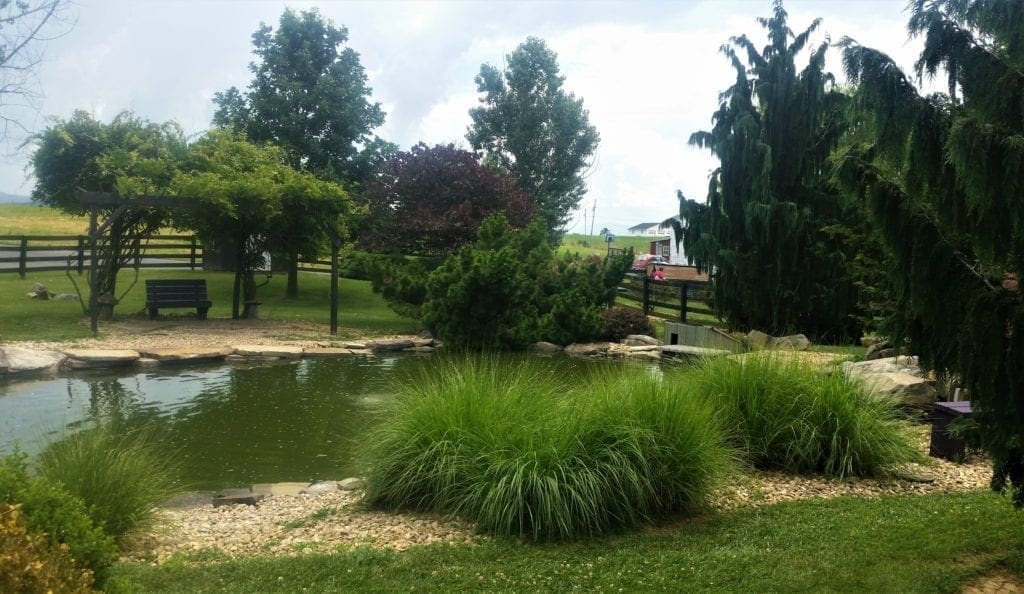
Discovery Area
The Discovery Area at the back section of our farm is home to interactive gardens.
For a small fee you can have access to the petting area, life-size checkerboard, duck pond, labyrinth, distillery, drying barn and additional gardens.
Animals include (but aren’t limited to) alpaca rescues, horses, mini-horses, pigs, rabbits, chickens, Mrs. Washington (a turkey), goats, sheep, and at least one cow.
There are also two picnic tables that are offered on a first come basis.
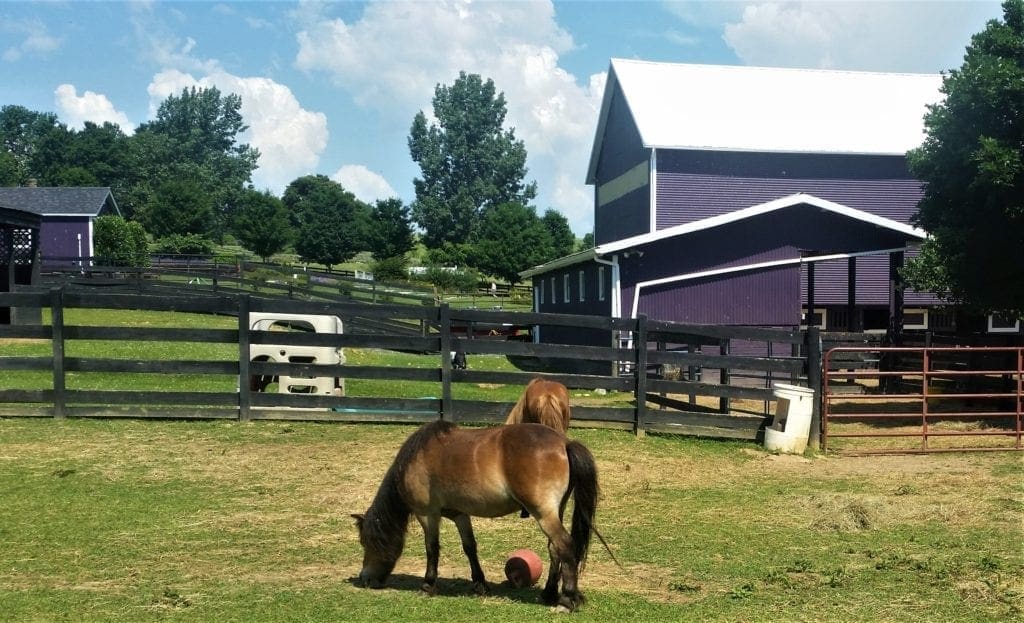
Seasonal Guided Tours
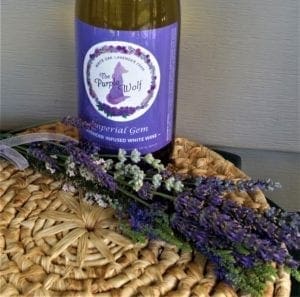
Guided farm tours are offered Memorial Day through Labor Day on Thursdays- Sundays; no reservations are required.
The tour includes a guided walk of the farm gardens with information on growing lavender, distilling and cleaning the flower buds.
The tour also includes a one-day entry to the Discovery Area, picking 20 stems of lavender (when in bloom), use of the walking labyrinth, duck pond and life-size checkerboard.
The cost is $9 per person. Children 2 and under are free.
-
-
- Thursday – Saturday: 11 am
- Sunday: 2 pm
-
Live Music Events
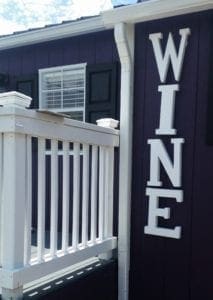
Live music events are held throughout the year on the family friendly Purple WOLF Tasting Room’s Lavender Deck.
There’s no cover charge.
Daytime music is offered on many Saturday and Sunday afternoons, or you may want to enjoy seasonal Lavender Skies Evening Music on The Farm with larger bands, dancing and food trucks.
The venue is heated and enclosed in cold weather and open air in the summer – with ceiling fans!
Visit Info
The farm and winery opened up again on June 11, but there have been some changes due to lingering COVID-19 restrictions.
Changes Due to COVID-19 Restrictions
Some new rules in place to comply with current COVID-19 restrictions for public safety.
Face Coverings – are required for all visitor’s aged 8 and up. They may be removed when eating and drinking.
On Premise Wine Sales and Seating: Groups must be 8 peoples or less (including children) and will be seated on a first-come first serve basis.
Curbside Pickup: Order online and choose “Pickup” in the delivery options, or call 540-421-6345 to place an order and we will bring your order to your car during operating hours.
For more details on COVID-19 related policies see this page.
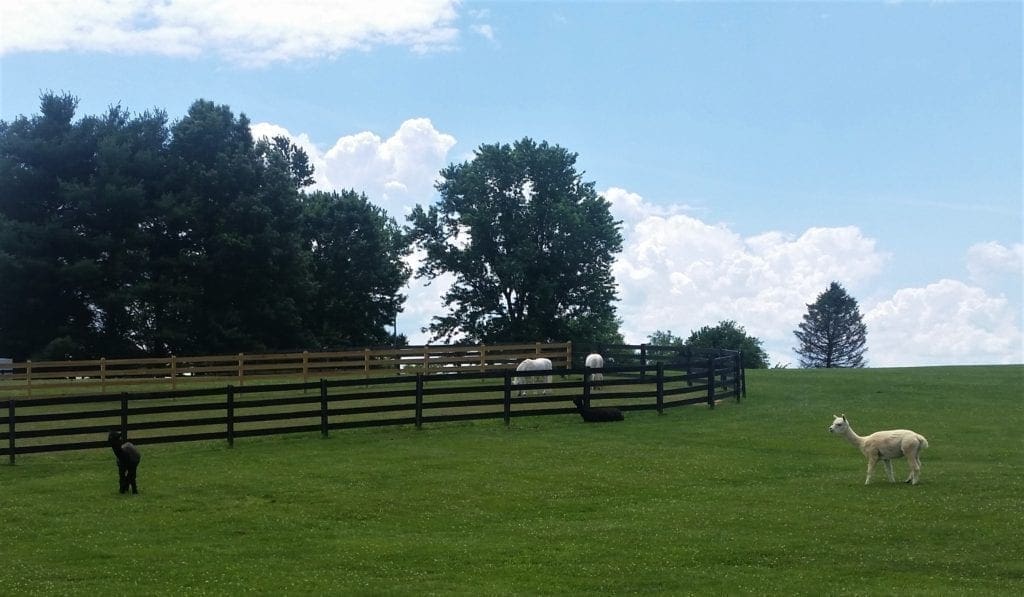
Location, Direction and Hours
Location:
2644 Cross Keys Road
Harrisonburg, VA 22801
Directions:
From I -81:
- Take exit 245 (Port Republic Road).
- Go East to Hwy. 276. Turn right.
- The entrance is on the right just past Newcomer Lane: 2644 Cross Keys Road.
Hours of Operation:
Th-Mon 11AM – 6 PM**
Tues-Wed, Pick up only. Farm is closed
Closed Jan. 1, Thanksgiving & Dec. 25
** Winter hours 5 PM (Begins Dec. 26)
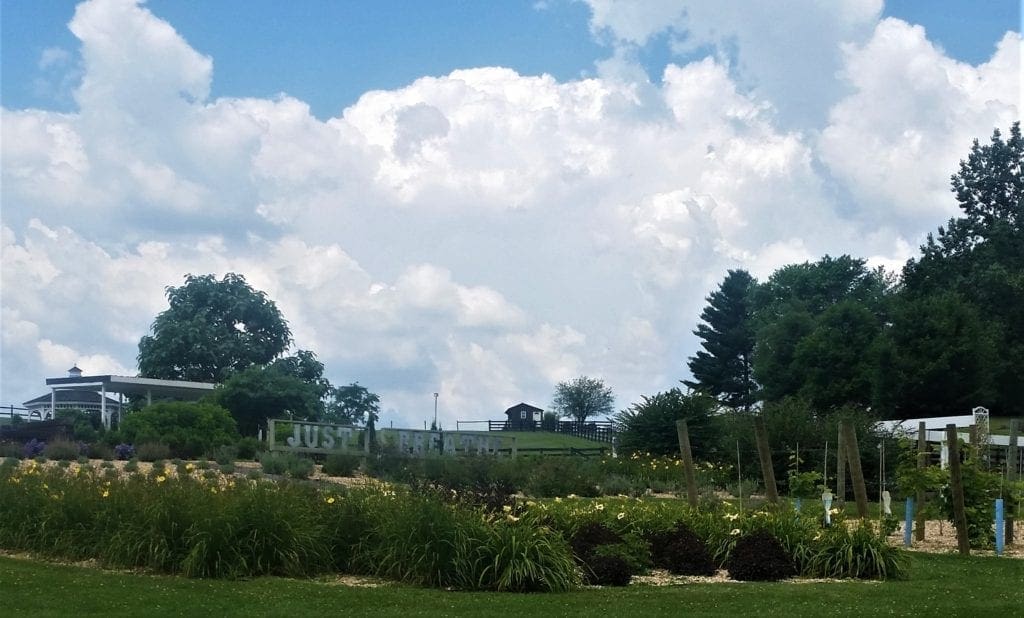
Have a great trip to White Oak Lavender Farm! If you have any questions or comments, drop me a note and I’ll get back to you as quickly as I can.
If you’re looking for other adventures for the whole family, visit my Get Outdoors with Kids page.
For more posts about my visits to State Parks and National Parks, go to the Hiking Destinations page.
Thanks for stopping by – see you next time! LJ
To Get New Idratherwalk Posts
sent directly to your inbox (how convenient!) Click this Button
If you enjoyed this post, please share it:
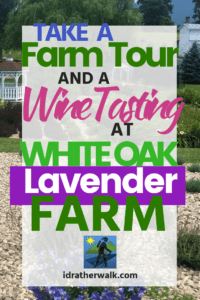
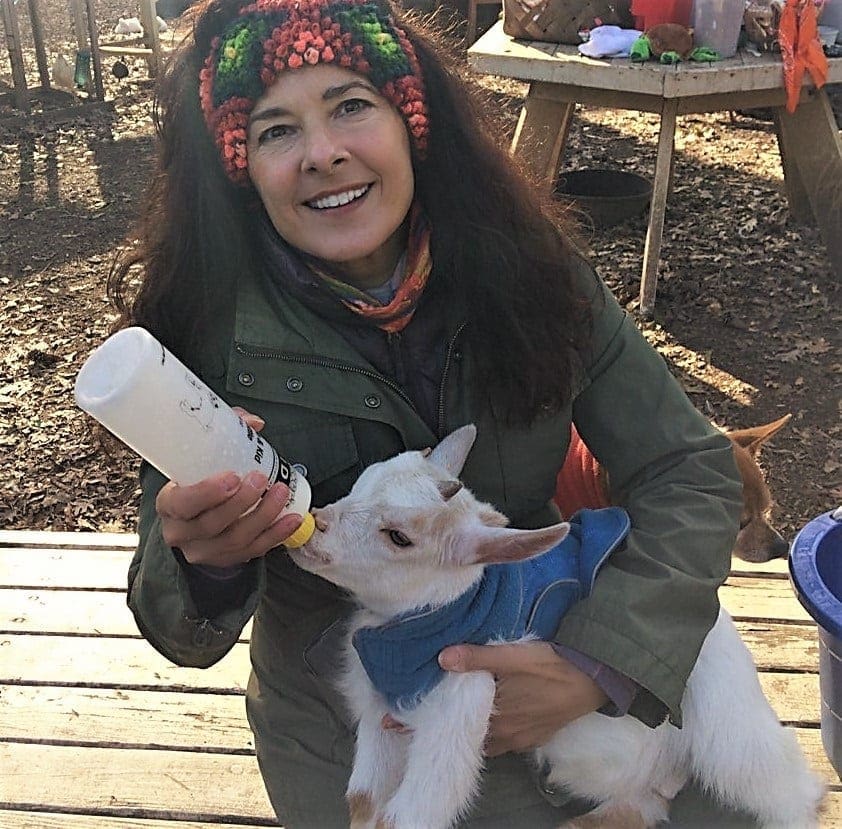
LJ has spent much of her free time as a single Mom – and now as an empty-nester – hiking in the US and around the world. She shares lessons learned from adventures both local and in exotic locations, and tips on how to be active with asthma, plus travel, gear, and hike planning advice for parents hiking with kids and beginners of all ages. Read more on the About page.

